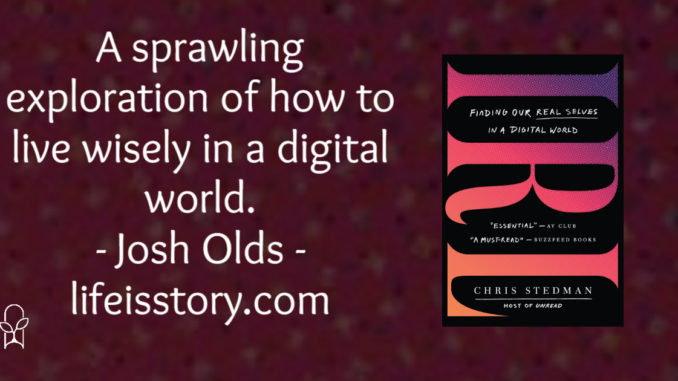
Published by Broadleaf Books on August 30, 2022
Genres: Technology, Non-Fiction, Memoir
Buy on Amazon
Goodreads

A must-read. --Buzzfeed
It's reflexive and common to view our online presence as fake; to see the internet as a space we enter when we aren't living our real, offline lives. But ever since a pandemic pushed more and more of our work, relationships, and even leisure into digital space, the internet doesn't feel so fake anymore. Every day, the lines between digital and real space blur even further.
Activist and writer Chris Stedman explores authenticity in the digital age, shining a light into and beyond age-old notions of realness--who we are and where we fit in the world--to bring fresh understanding for our increasingly online lives. Stedman offers a new way of seeing the supposed split between our online and offline selves, one in which online spaces and social media become new tools for understanding and expressing ourselves--and where the not-always-graceful ways we use these tools can reveal new insights for incorporating far older human truths into modern life. How might the online spaces we use fulfill our essential human need to feel real? Must we view the internet and the real world as binary, where there is no room for overlap? Playful and wise, Stedman suggests that the digital search for meaning and belonging presents challenges but also opportunities to become more fully human. He boldly invites us to embrace realness in all its uncertainty, online and off, no matter how risky it might feel.
The first time I ever really felt at home was in an online forum. The year was 2008 and I signed up to play an online game hosted by my favorite author where the winner got a car. I didn’t win the car, but came away with a couple dozen friends—and a hundred or so acquaintances—that moved to a new web forum, then various other social media and Skype. Fifteen years later, my closest friends and my spouse all came from that group. That’s the power of online connections and that’s the connectivity that Chris Stedman sought to explore in IRL: Finding Our Real Selves in a Digital World.
By 2020, most people were familiar with digital social media and online interactions in some form. That’s the world that the first edition of IRL, published in 2019, was written in. But in March 2020, COVID lockdowns hit and suddenly our online identities became our only social identities. Now, after two years of COVID, the online landscape has evolved and a second edition of IRL speaks into that situation. Part memoir, part philosophy of technology, IRL explores the concept of authenticity online, helping readers navigate online spaces and live in their digital world in a way that leads to flourishing.
My main criticism with IRL would be its length. Part of this is due to an almost fifty-page introduction to this revised edition addressing the COVID pandemic. But even the main body of work can be too slowly paced and plodding at times. Stedman is consistent in his overwriting in both the philosophy and the memoir, so it definitely seems to be his writing style. For me, that meant that the strength of his points was occasionally lost amid the prose.
Stedman makes several great points about online existence, particularly the way in which online communities marginalized people to connect in ways not possible in real life. So many individuals lacking a like-minded community in their geographical locations found a home among their people in online spaces. He also talks about the dangers of social media to rapidly spread misinformation or create echo chambers or end relationships. While online relationships can be stronger, they can also be more tenuous.
Social media also gives people an opportunity to curate reality==to see only the things they want to see and share only the things they want to share. Finding a balance of being vulnerable while staying safe, informed while not being overwhelmed, appropriate while also being authentic, can be difficult and it may look different for everyone.
In the end, IRL is a sprawling exploration of how to live wisely in a digital world. Perhaps ironically, while the online world is known for its quick content and short attention spans, Stedman writes a slower, more thorough, and personal work. I honestly think that the work might have benefitted from being two separate volumes: one a memoir of coming of age in a digital world and another the philosophical musings of living digitally. As is, the two types of story fight for control with the book ending up feeling like two people talking over one another. Less memoir and more application would have made this book a bit stronger—not because Stedman’s personal story isn’t valuable but because he never quite makes it cohere to the topic quite as well it should have.
